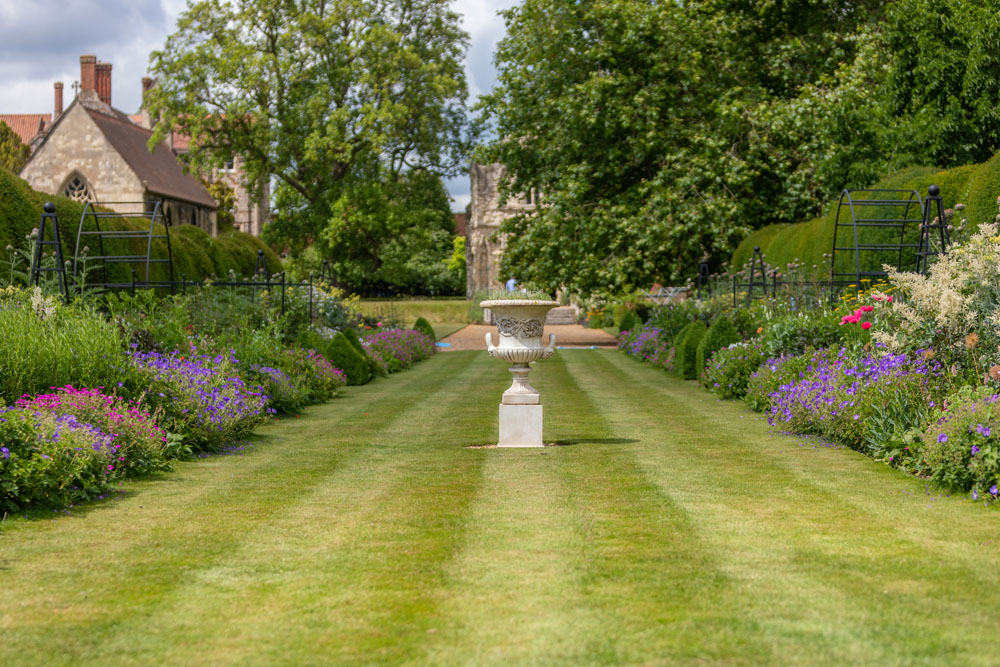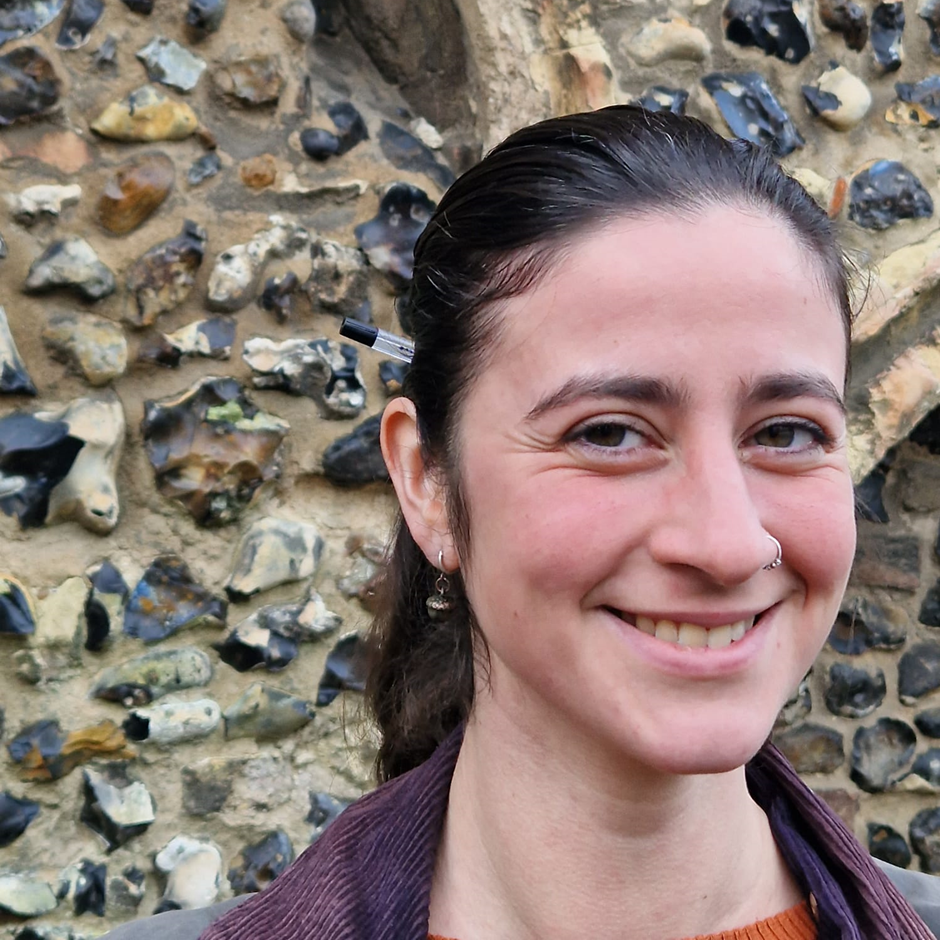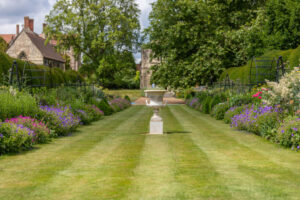The Bishop of Norwich’s historic private garden is full of delights such as herbaceous borders, a small woodland walk, bee hives and more.
The garden is run organically and includes a herb garden, long herbaceous borders, ‘jungle’ walk, large wildflower labyrinth and fruit orchard, extensive shrubberies containing many rare and unusual plants, among these being a Hebe planted from a sprig taken from Queen Victoria’s wedding bouquet in 1840. There is a kitchen garden, a bamboo walk and a popular plant sales area, and the garden continues to evolve with new plants and features being introduced year by year.

Opening dates & times
The Bishop’s House Garden is open again in 2024 to raise money for local charities. The charities for spring/summer 2024 are:
- 12 May – Norwich Samaritans
- 19 May – St Martins Housing Trust
- 2 June – CPRE Norfolk
- 9 June – Nelson’s Journey
- 16 June – St Barnabas Counselling Centre
- 23 June – Norwich Integration Partnership
- 7 July – National Garden Scheme
- 14 July – Yare Valley Riding for the Disabled
- 21 July – Great Yarmouth and Gorleston RNLI
- 4 August – EACH (East Anglia’s Children’s Hospices)
Gates will be open from 1pm to 4.30pm, last entry at 4pm. Admission price is £5 per adult. Accompanied children under 16 years and wheelchair users are free. Assistance Dogs only.
Refreshments will be on sale.
Plants grown from the Bishop’s House Garden are available to buy on Garden Open Days. We sell a large range of plants from herbaceous perennials to specimen sized shrubs and bamboos. They are mostly grown from seed or propagation out of the garden and are grown in peat free compost. Proceeds from plant sales go towards the running of the garden and new projects in the garden.
The nearest parking is in the small pay and display car park outside the entrance or in the larger pay and display car park a few further yards down, just off Bishopgate and opposite the Adam and Eve pub
Bishop Graham and Rachel would be delighted if you were able to join them on one of these days.
Private Tours for groups can be arranged at mutually convenient times through the Bishop’s Finance and Facilities Assistant – email: louise.cumberland@dioceseofnorwich.org
History of the Garden
A historic private four-acre formal city centre garden has belonged to the Bishops of Norwich for over 900 years
One of Norwich’s hidden secrets, the Bishop’s Garden occupies 4 acres in the city centre. There has been a garden of sorts since around 1100 AD when Bishop de Losinga began to build the cathedral and palace. From the existing garden, one can still marvel at the original detailing of Norman stonework on the North Transept of the cathedral which is only visible from the Bishop’s Garden.
In the early 14th century, Bishop John Salmon greatly increased the size of the garden by the compulsory purchase of additional land. He pushed Bishopgate northwards, thereby extending the grounds to their present size. The high walls that still survive were built nearly 700 years ago. He was also responsible for the large hall that was added to a grand porchway. This ruin still stands in the garden and is known as Bishop Salmon’s Porch.
The visible chapel building that remains at the upper lawn terrace was built around 1662 after Bishop Reynolds had destroyed the original 120ft long chapel and one of the largest halls of its time. Some of the stained glass windows visible today came from the previous building. Now used by Norwich School it is known as Bishop Reynold’s Library.
The last of the major medieval buildings in the Bishop’s Garden was Bishop Alnwick’s Gate, started by Bishop Alnwick in the early 1400s and completed by Bishop Lyhart in the mid-1400s.
The general form of the garden was laid down at least 300 years ago. The lower end was cultivated and separated by a wall running straight across the garden. The only remains of this wall are by the large London Plane tree that dominates the garden.
The colossal Old Bishop’s Palace, which still stands, was completed in around 1860. In 1959 a major change took place when a new Bishop’s House was built and the Old Palace came to be used by Norwich School. The garden was reduced from 6 ½ acres down to the present 4 acres. Records show that in the 1940s up to 15 gardeners were employed and in the 1950s 9 were employed. Now the garden is looked after by 1 full-time and 1 part-time gardener.
The garden has many hidden delights for visitors such as the long herbaceous borders, a small woodland walk, a recently added herb garden, a large shade border, a wildflower labyrinth and fruit orchard and extensive shrubberies containing many rare and unusual plants. There is an organic kitchen garden, bamboo walk, and a popular plant sales area and the garden continues to evolve with new plants and features being introduced year by year.
The Gardeners
Head Gardener – Harriet Boyd
Harriet Boyd took on the role of Head Gardener in November 2023. Before coming to the Bishop’s House Garden, she worked in South London on a mixture of private and community projects. She feels that gardening is something that should be made available to all as it can have wonderful effects on mental and physical health as well as fuelling a love for the natural world around us.
Harriet’s community projects included the design and instalment of pocket parks; the development and running of community gardens and allotments; and educational sessions in primary schools on vegetable growing. She was employed in the maintenance of private gardens in South East London with a focus on organic and environmentally conscious practices.
Working with Bishop Graham, Harriet’s approach at the Bishop’s House Garden looks to further raise the garden’s environmental credentials and make it a beacon of success for environmentally led horticulture.

Victoria Bleksley
Vic joined the team as Assistant Gardener in September 2021. To facilitate a career change, she completed a WRAGS traineeship in horticulture and is currently studying for RHS Level 2 certificate in horticulture. Vic is passionate about promoting sustainable practises and encouraging bio-diversity. She is interested in the beneficial effects of human interactions with plants, gardens and natural environments for well-being and is taking courses in Social and Therapeutic Horticulture.
A small volunteer group give help in the garden and we also take on a number of work experience students each year to aid them with their practical experience.

